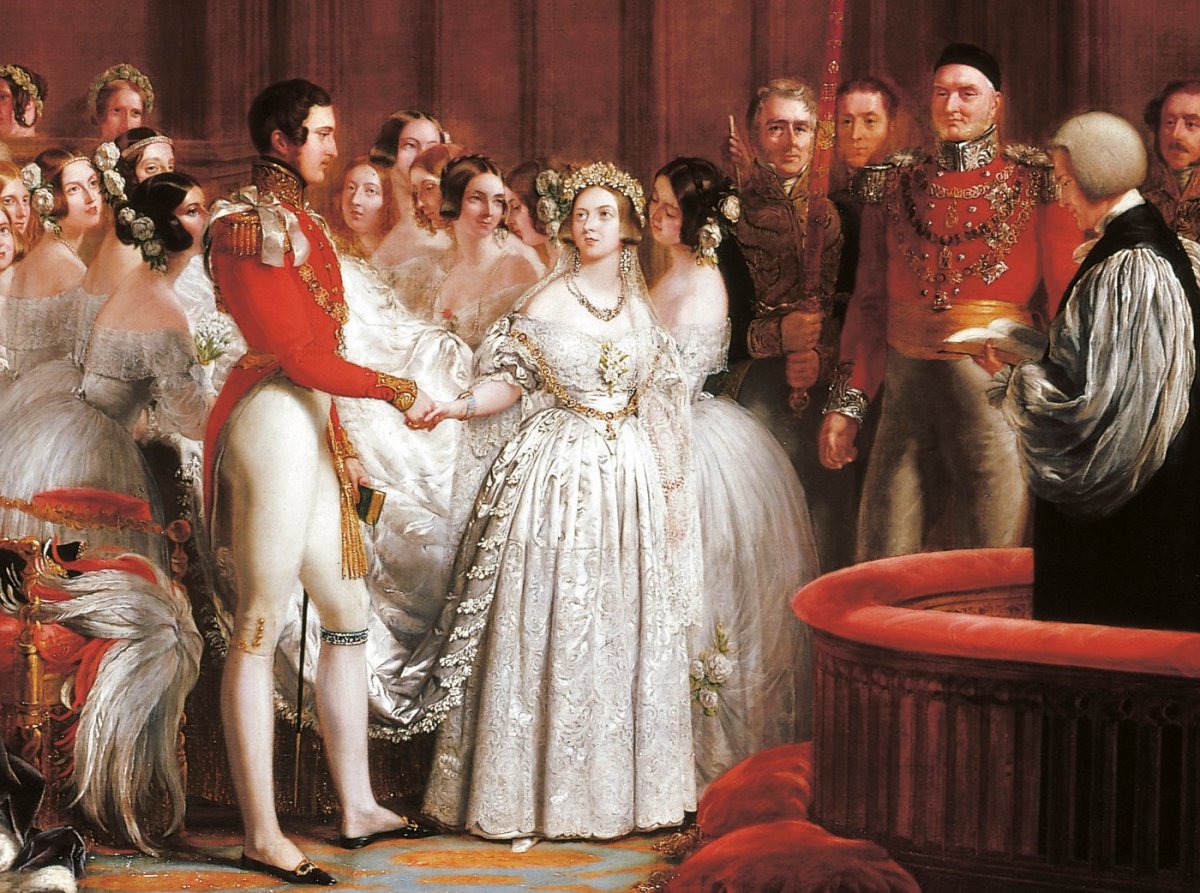
For today’s Wedding Tiara Wednesday article, we’re covering the royal jewels from a wedding with no tiara at all—but lots of interesting royal diamonds! Let’s delve into the jewels worn by Queen Victoria to marry Prince Albert in 1840.
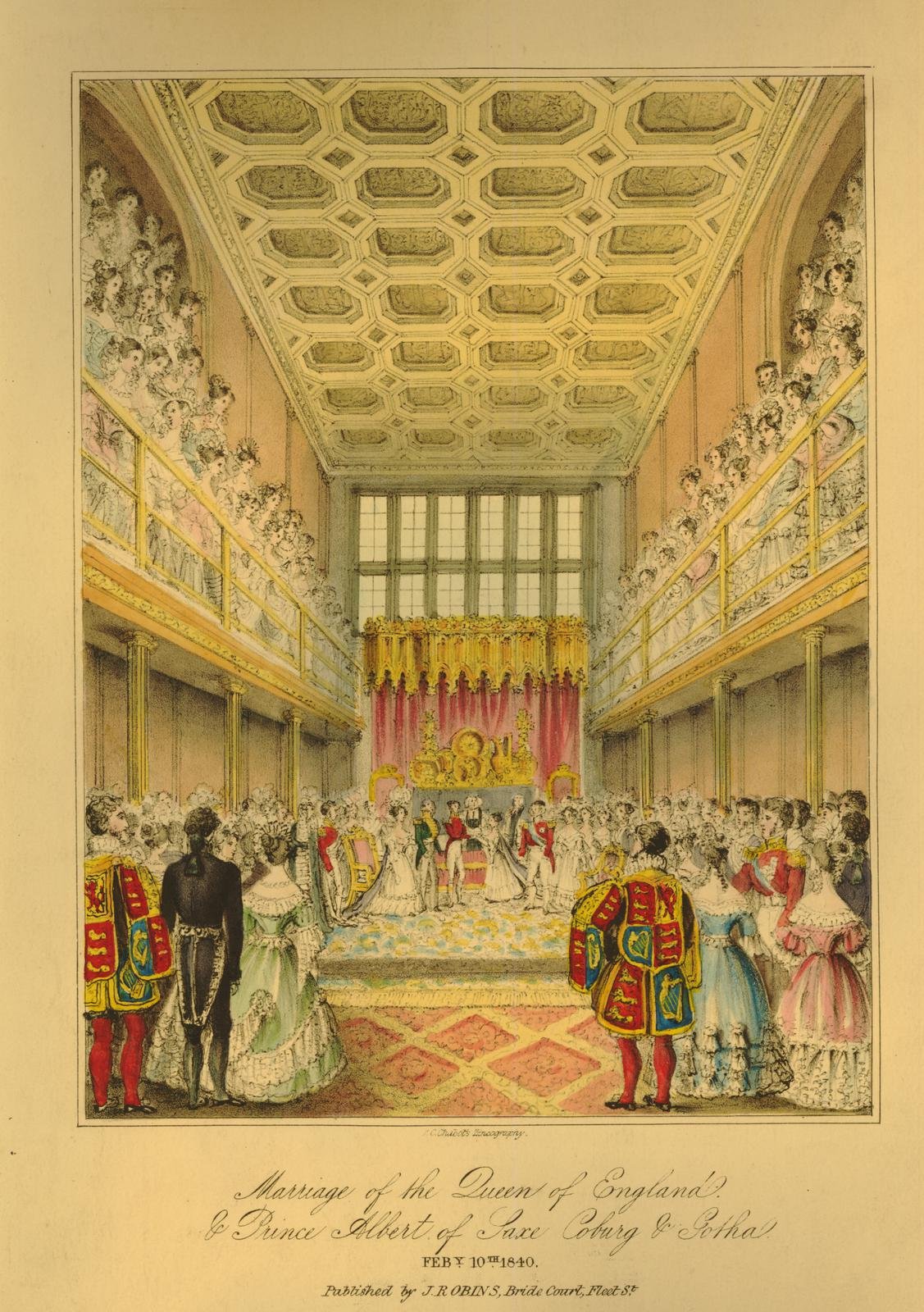
On February 10, 1840, the eyes of Britain were on St. James’s Palace, where the young Queen Victoria arrived in a grand royal procession for her wedding to Prince Albert of Saxe-Coburg and Gotha. The bride and groom were first cousins. Victoria’s mother, the Duchess of Kent, was a sister of Albert’s father, the Duke of Saxe-Coburg and Gotha. Though she was already a monarch, Victoria chose to promise to “obey” her new husband in her vows, something the press took special note of at the time of the wedding.
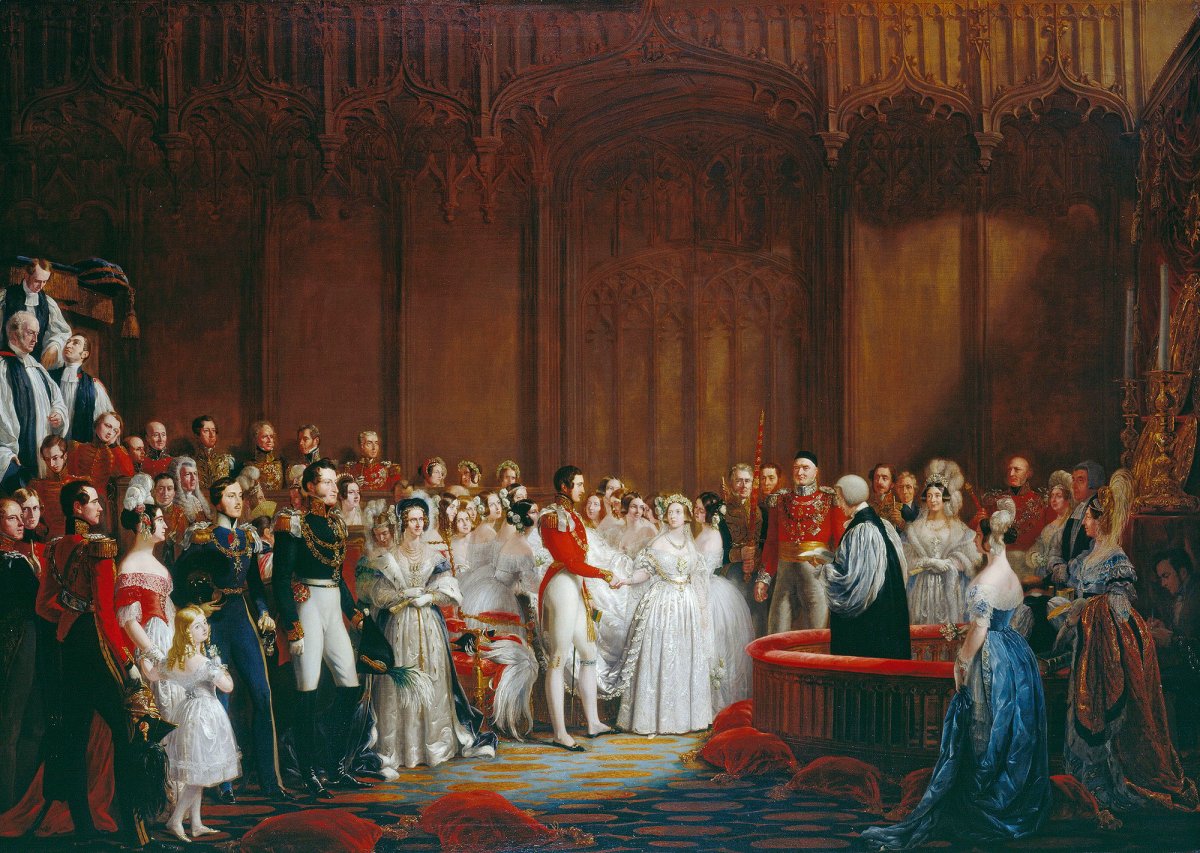
The small chapel was packed with royal relatives, government officials, and foreign dignitaries for the ceremony. Among those present were Queen Adelaide, the widow of King William IV, and several of the bride’s aunts and uncles (including the Duke and Duchess of Cambridge, the Duke of Sussex, and Princess Augusta Sophia).
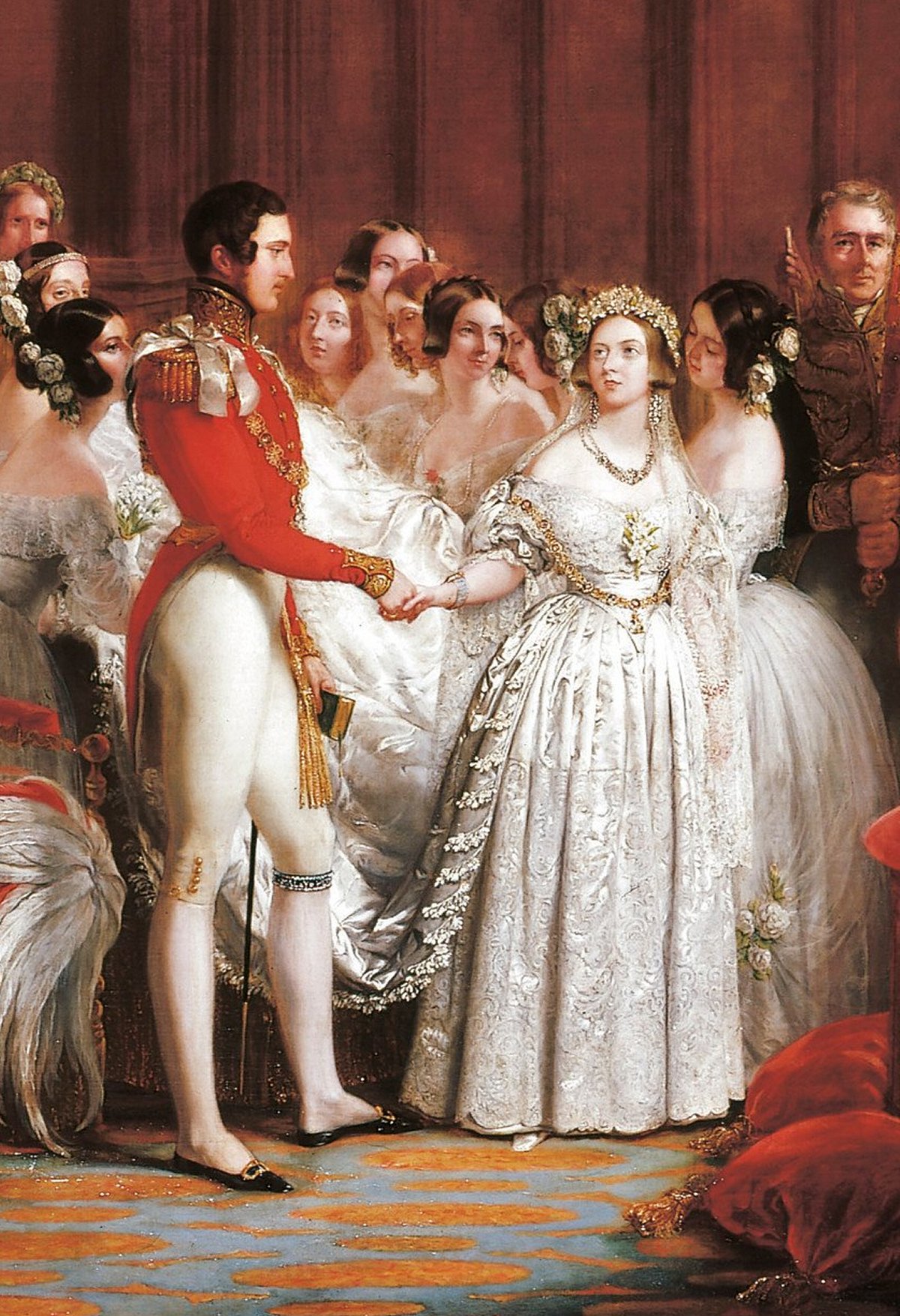
Twelve aristocratic bridesmaids carried the train of Victoria’s elaborate wedding gown during the procession. The dress was made by Mrs. Mary Bettans, Victoria’s dressmaker, who had an establishment in Jermyn Street in London. According to reports syndicated across several prominent British newspapers, including the Observer, the dress was made “of white satin, with a very deep trimming of Honiton lace, in design similar to that of the veil. The body and sleeves were richly trimmed with the same material to correspond. The train was of white satin, and was also lined with white satin, trimmed with orange blossoms.” The collar and star of the Order of the Garter were fastened to the gown’s bodice for the ceremony.
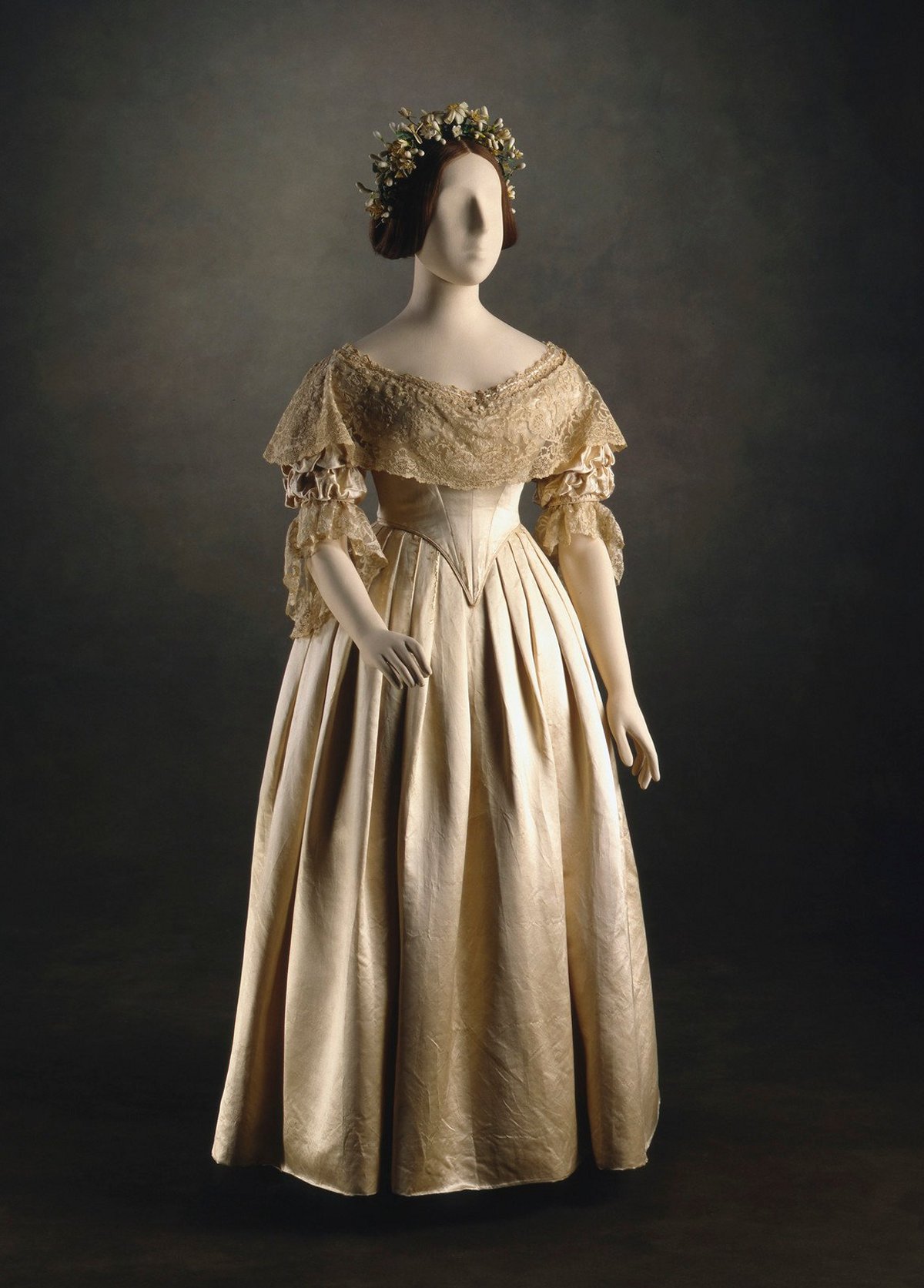
The satin used to make the gown was manufactured in Spitalfields, a patriotic touch. The lace, according to contemporary papers, “was really worked at the village of Beer, which is situated near the sea coast, about ten miles from Honiton. It was executed under the direction of Miss Bidney, a native of the village, who went from London, at the command of Her Majesty, for the express purpose of superintending the work. More than two hundred persons were employed upon it from March to November during the past year.” The Royal Collection notes that Victoria’s choice to wear a lace gown helped to “[revive] the flagging lace industry in Honiton, Devon” at a time when Brussels lace was more fashionable.
Victoria was especially proud of the lace flounce on the gown’s bodice. Press reports noted that the flounce’s lace “measured four yards and is three-quarters of a yard in depth. The pattern is a rich and exquisitely tasteful design, drawn expressly for the purpose, and surpasses anything that has ever been executed either in England or in Brussels. So anxious was the manufacturer that Her Majesty should have a dress perfectly unique that she has since the completion of the lace destroyed all the designs.”
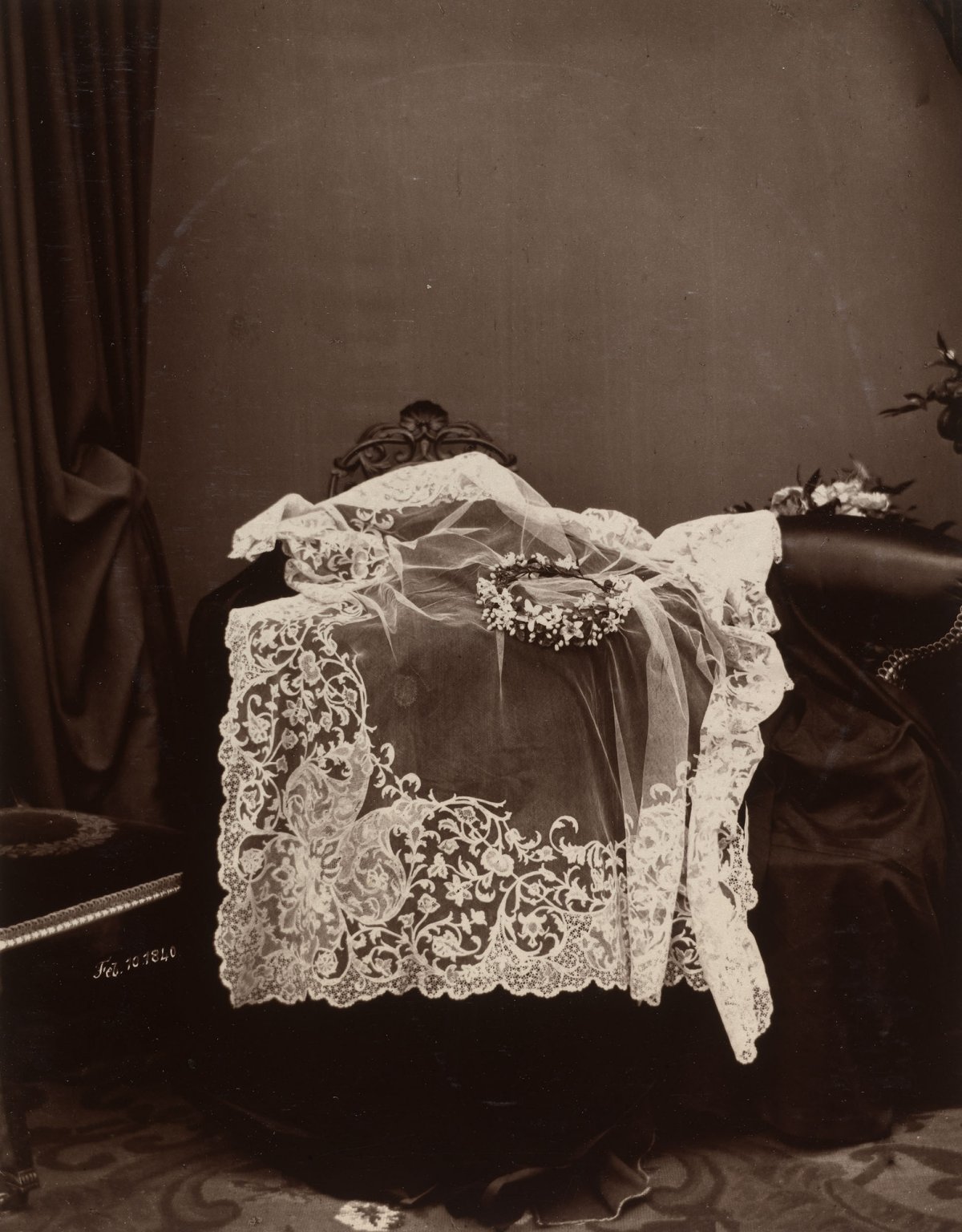
Even more lace, of the same design as that worked on the flounce, was used to make Victoria’s wedding veil. Papers reported that the veil was “a yard and a half square” and “afforded employment to the poor lace-workers for more than six weeks.” The veil is picture above in a photograph taken for Victoria’s own private collection around 1890.
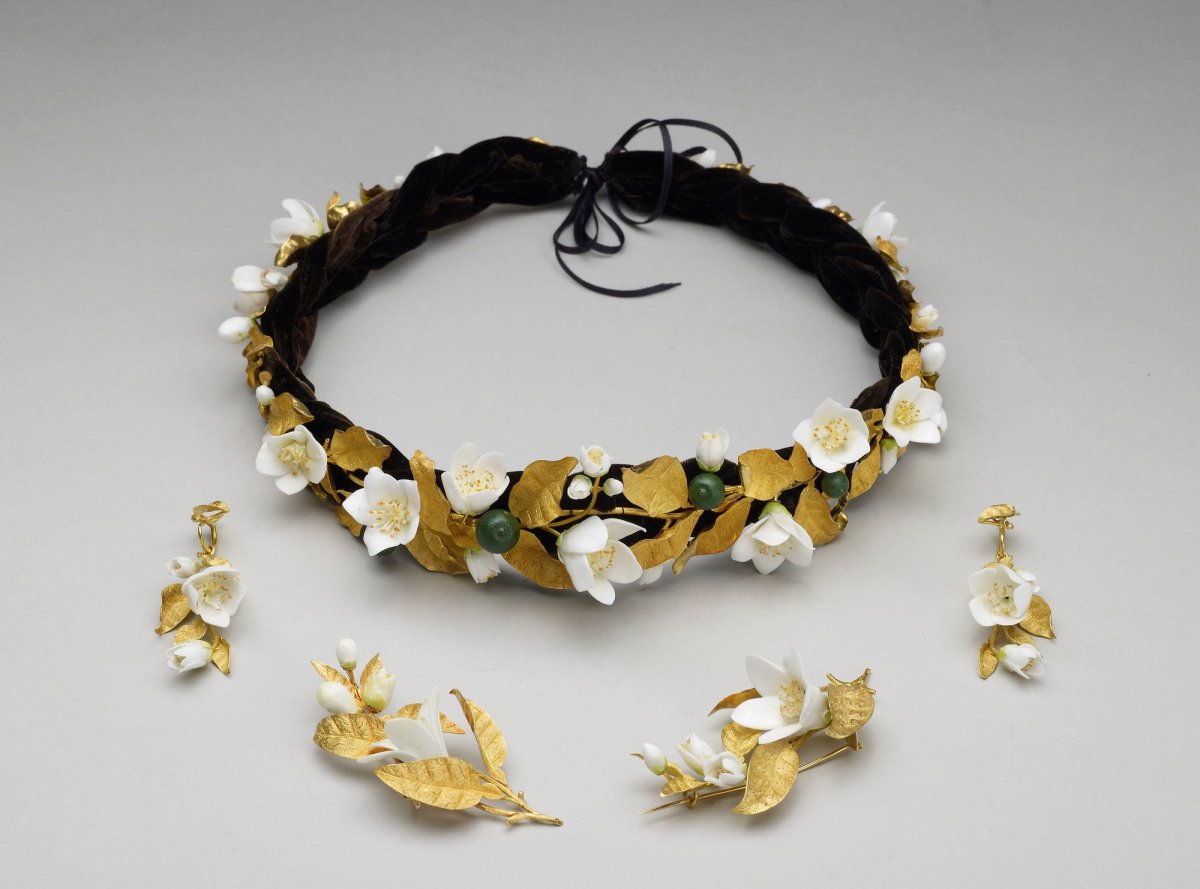
Though news reports indicated that many of the guests at the wedding wore tiaras and other bejeweled hair ornaments—”the headdresses of the ladies were most profusely studded with jewels”—Victoria did not wear a tiara for her wedding ceremony. Instead, her veil was secured with a wreath of fresh orange blossoms. Additional orange blossoms were also pinned to her gown. The choice began a trend, and soon jewelry with orange blossom designs was also popular.
Indeed, Albert had sent Victoria a brooch with an orange blossom design as an engagement present in 1839, the year before their wedding. As the years passed by, he added more pieces of orange blossom jewelry to her collection, creating a parure. He gave her a second brooch and a pair of earrings in December 1845, and in February 1846, as an anniversary gift, he presented her with a matching headpiece. The set features porcelain orange blossoms and gold leaves. The bandeau also has four round oranges made from enamel, representing their four children at the time (Vicky, Bertie, Alice, and Affie). Victoria would wear the orange blossom jewelry every year on their anniversary going forward.
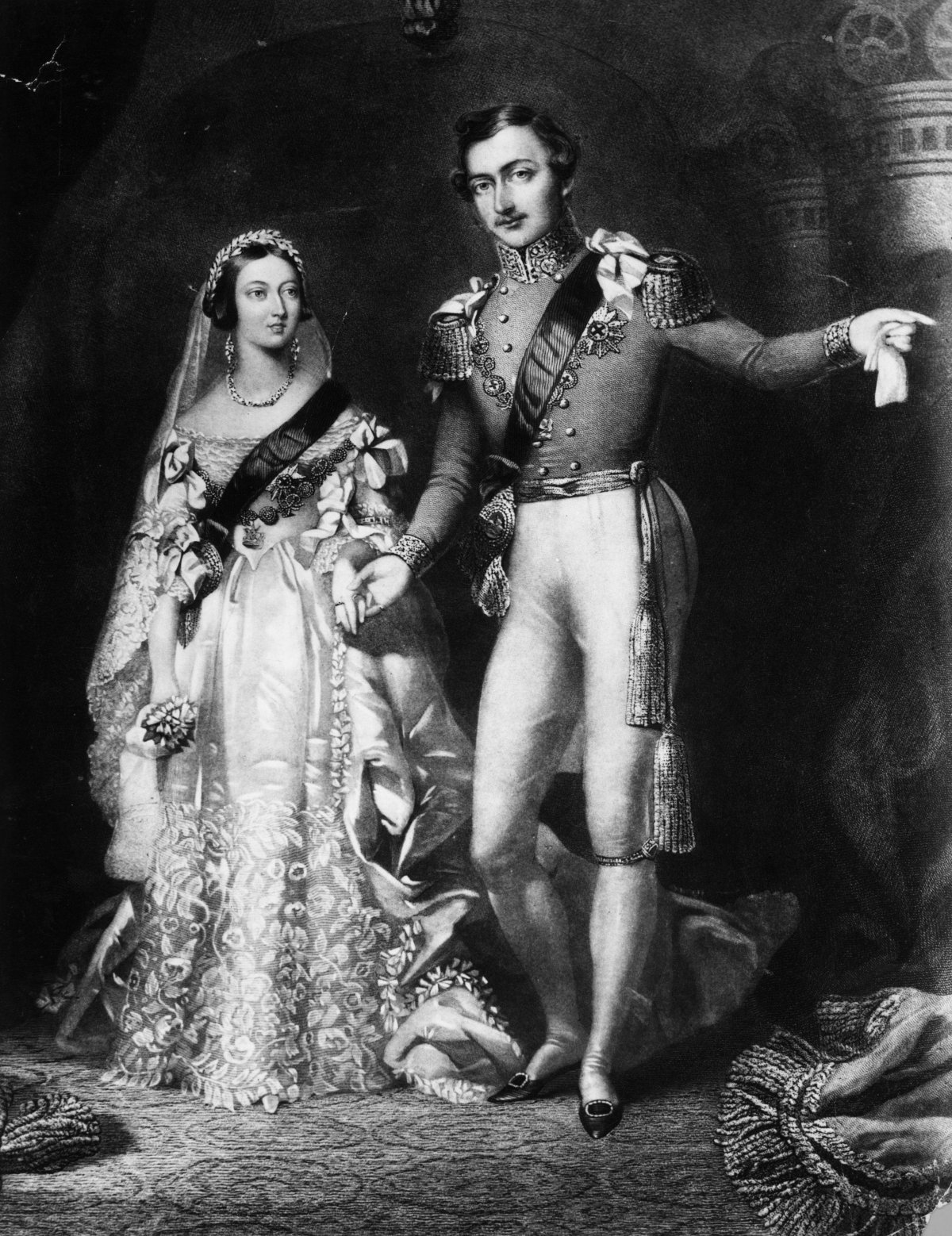
Photographic technology was not yet available when Victoria and Albert were married in 1840, but Victoria’s jewelry from the wedding day itself is represented in various paintings and illustrations made at the time of the nuptials. There are varying levels of accuracy present in the different images. This stylized illustration, for example, replaces her orange blossoms with a wreath of laurel, but it does include the two diamond jewels that she wore for the ceremony: a necklace and earrings, set with loose diamonds that had been given to her in 1838, her coronation year, by the Sultan of Turkey. Both parts of the suite, which was made by Rundell & Bridge, featured diamond rosettes in their design.
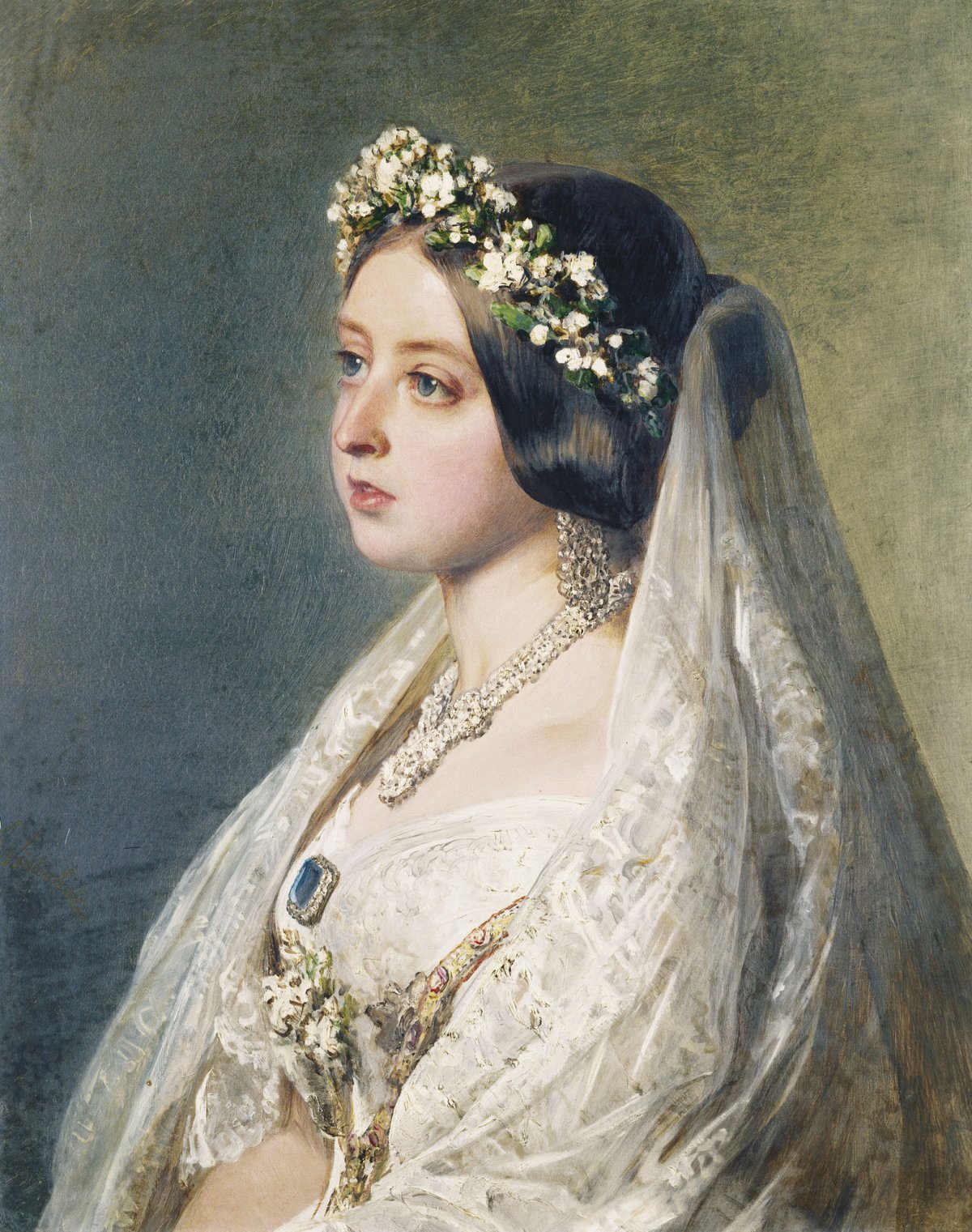
Seven years after their royal wedding, Queen Victoria commissioned a special portrait of her wearing her wedding attire as an anniversary gift for Prince Albert. The painting was done by a favorite artist, Franz Xaver Winterhalter. He completed the portrait by February 1847, and Victoria surprised Albert with the gift on February 24. The painting was placed in the prince’s private dressing room at Windsor Castle.
Interestingly, the portrait features a piece of jewelry missing from contemporary paintings and illustrations of the wedding: the diamond and sapphire cluster brooch that Albert gave her on the night before. George Hayter’s famous painting of the wedding scene doesn’t include the brooch—a spring of orange blossoms is affixed to the Queen’s bodice instead. And contemporary newspaper reports describing Victoria’s wedding dress and jewels also fail to mention the brooch at all. But in her journal entry written on the night of the wedding, Victoria does mention the brooch herself: “I wore a white satin dress, with a deep flounce of Honiton lace, an imitation of an old design. My jewels were my Turkish diamond necklace & earrings & dear Albert’s beautiful sapphire brooch.” In her 2012 essay on Victoria’s jewelry, Charlotte Gere notes that the 1847 Winterhalter portrait corrects the brooch omission made in the Hayter painting.
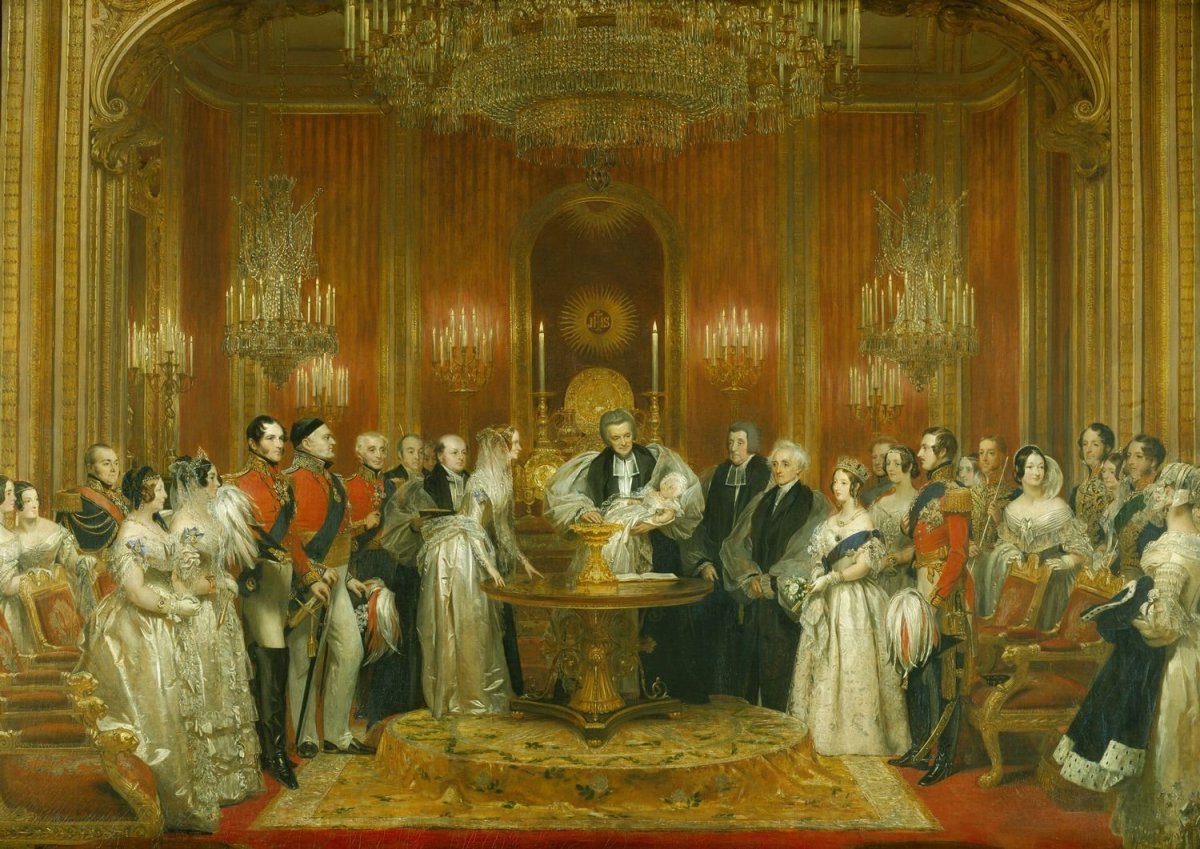
Queen Victoria was an extremely sentimental person, and the 1847 portrait wasn’t the only time that she would repeat elements of her wedding ensemble on important occasions. The first of these came exactly one year after the wedding. Victoria and Albert’s first child, Princess Vicky, was baptized at Buckingham Palace on February 10, 1841, the couple’s first wedding anniversary.
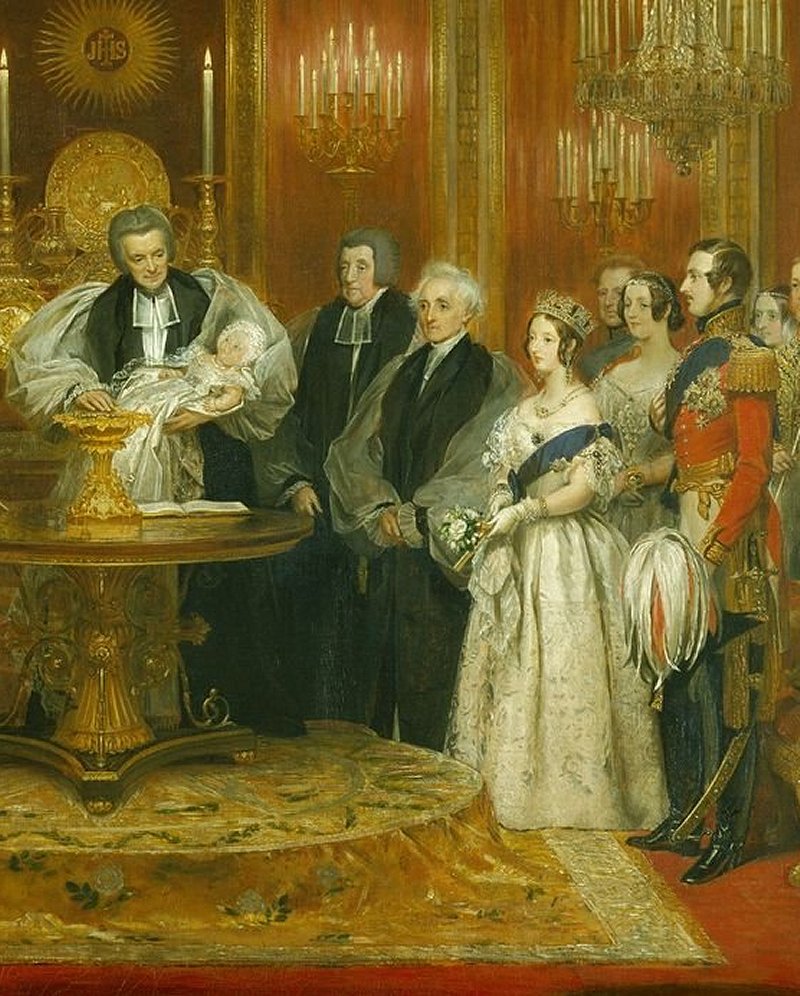
Charles Robert Leslie’s painting of the scene shows Queen Victoria wearing the Diamond Diadem (made for her uncle, King George IV) with the Turkish Diamonds and Prince Albert’s Brooch. She’s also wearing the lace flounce from her wedding gown on her dress.
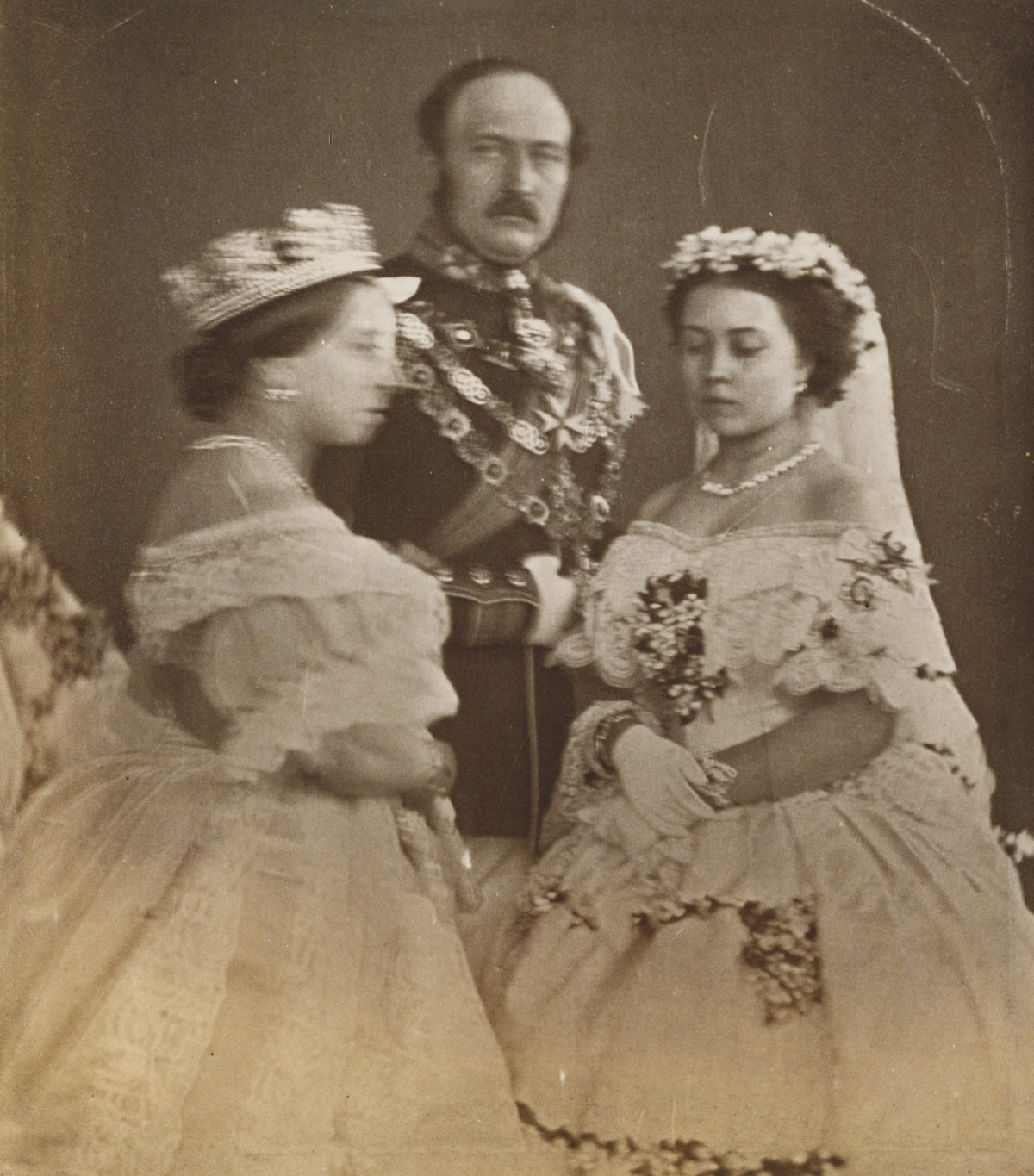
Seventeen years later, when Princess Vicky married Prince Friedrich Wilhelm of Prussia, Queen Victoria again wore echoes of her own wedding day. With her lilac-hued mother-of-the-bride ensemble, she wore the treasured lace flounce from her own wedding gown. It’s tough to see the details in this photographic print, made from a daguerreotype taken just before the wedding ceremony, which was held at the Chapel Royal in St. James’s Palace (the same place Victoria and Albert were married) on January 25, 1858. The image is blurry because, touchingly, Queen Victoria was extremely nervous and had trouble standing still. She recounted in her journal later that night, “Vicky was daguerreotyped in my room, & she & her dear father & I, together, but I trembled so that it has come out indistinct. Then, it was time to go.”
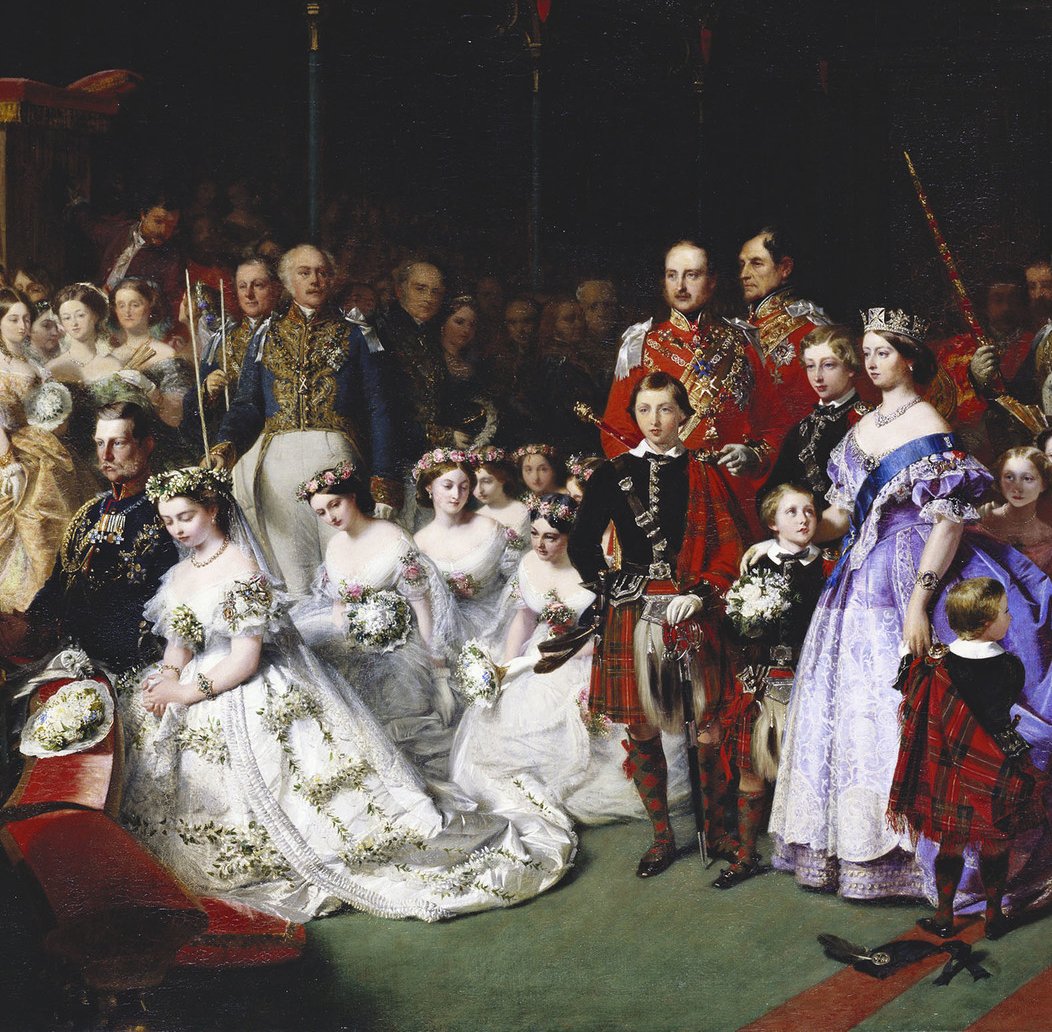
In John Phillip’s painting of the wedding, you can see the lace on the front of Victoria’s gown. She’s also wearing the Turkish Diamond Necklace with other jewels (including the Diamond Diadem and the Koh-i-Noor Brooch).
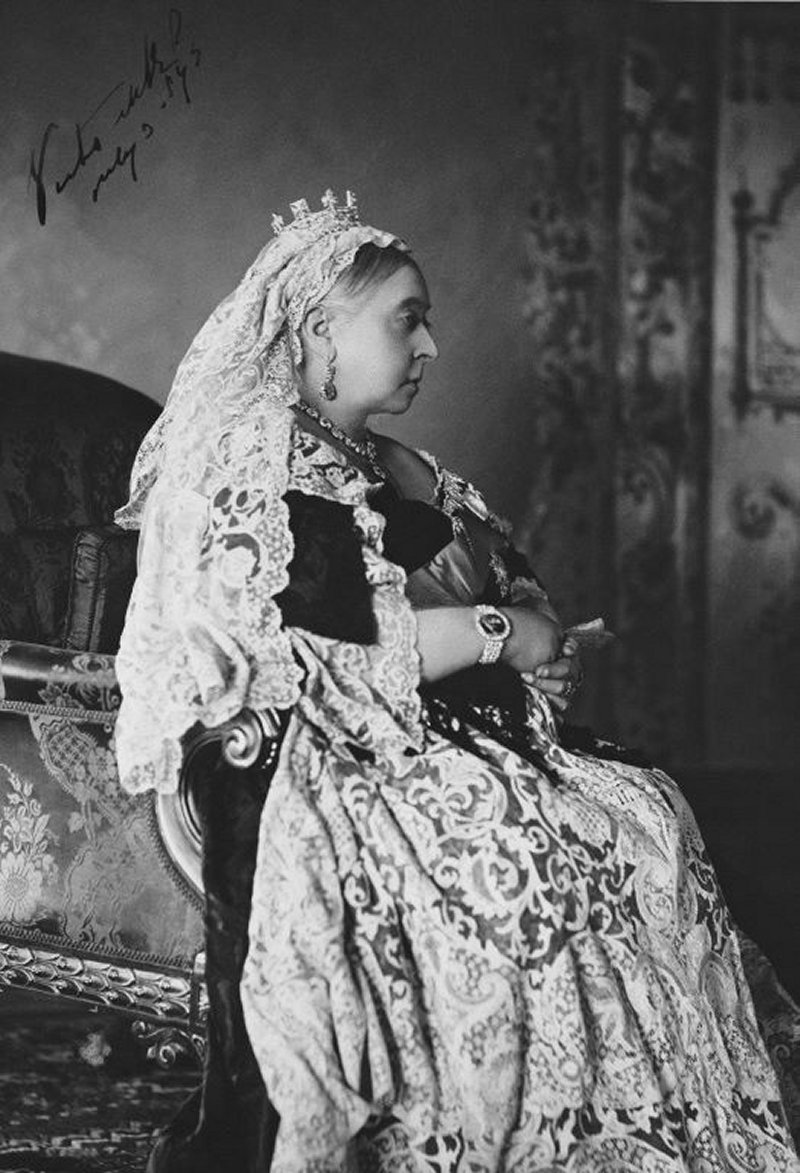
She wore the lace flounce on numerous other important family occasions. The late fashion writer Hilary Alexander noted in 2011, “It was carefully removed from her wedding gown and added, time and time again, to other dresses. After Albert’s death from typhoid fever in 1861, at the age of 42, the lace became more beloved.” One of the last of these outings for the lace came in the summer of 1893. She wore the flounce and her wedding veil again that July for the wedding of her grandson, the Duke of York, and Princess May of Teck (the future King George V and Queen Mary). Photographs from the portrait session were also used four years later in 1897 as the official portraits for her Diamond Jubilee.
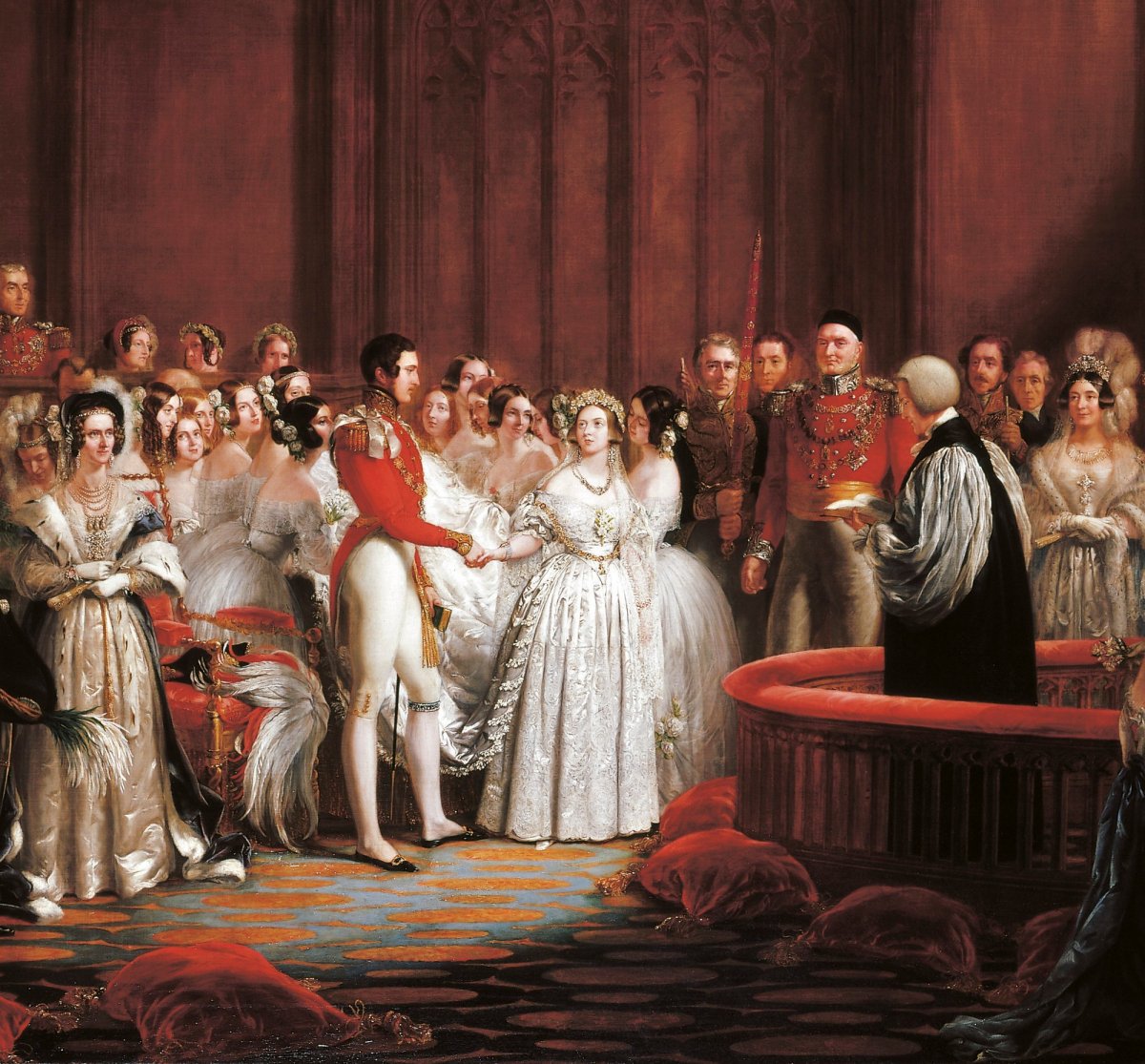
So, where are all of the components of Victoria’s wedding ensemble—clothes and jewelry—today? Some have been preserved, while others are lost to time.

Victoria’s wedding dress has undergone major conservation, and it is has been displayed at Kensington Palace, her childhood home, in London. The lace flounce, however, is too fragile to be exhibited and remains in storage. The orange blossom parure that Albert gave her, an echo of the original wreath of flowers that she wore for their wedding ceremony, has also been displayed at Kensington Palace.
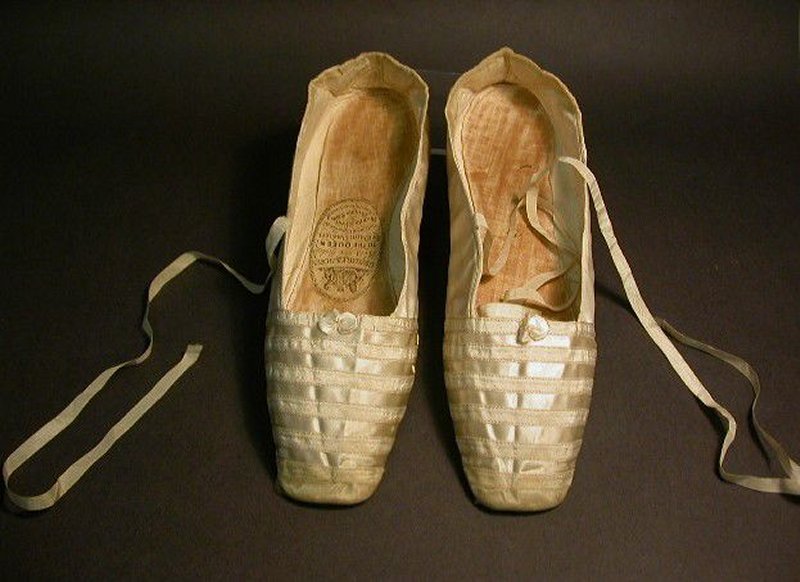
The delicate white satin slippers that Victoria wore for the wedding are now part of the shoe collection at the Northampton Museum.

Two elements of the wedding ensemble were buried with Victoria when she died in January 1901. Her wedding ring remained on her finger when she was placed in her coffin, and her wedding veil was placed over her body. Both are interred with her at Frogmore.

As for the rest of her jewelry, some pieces are accounted for her, while others are not. Prince Albert’s Brooch remains a part of the royal jewelry collection. It was designated as an heirloom of the crown by Victoria, which means that it now passes from monarch to monarch.
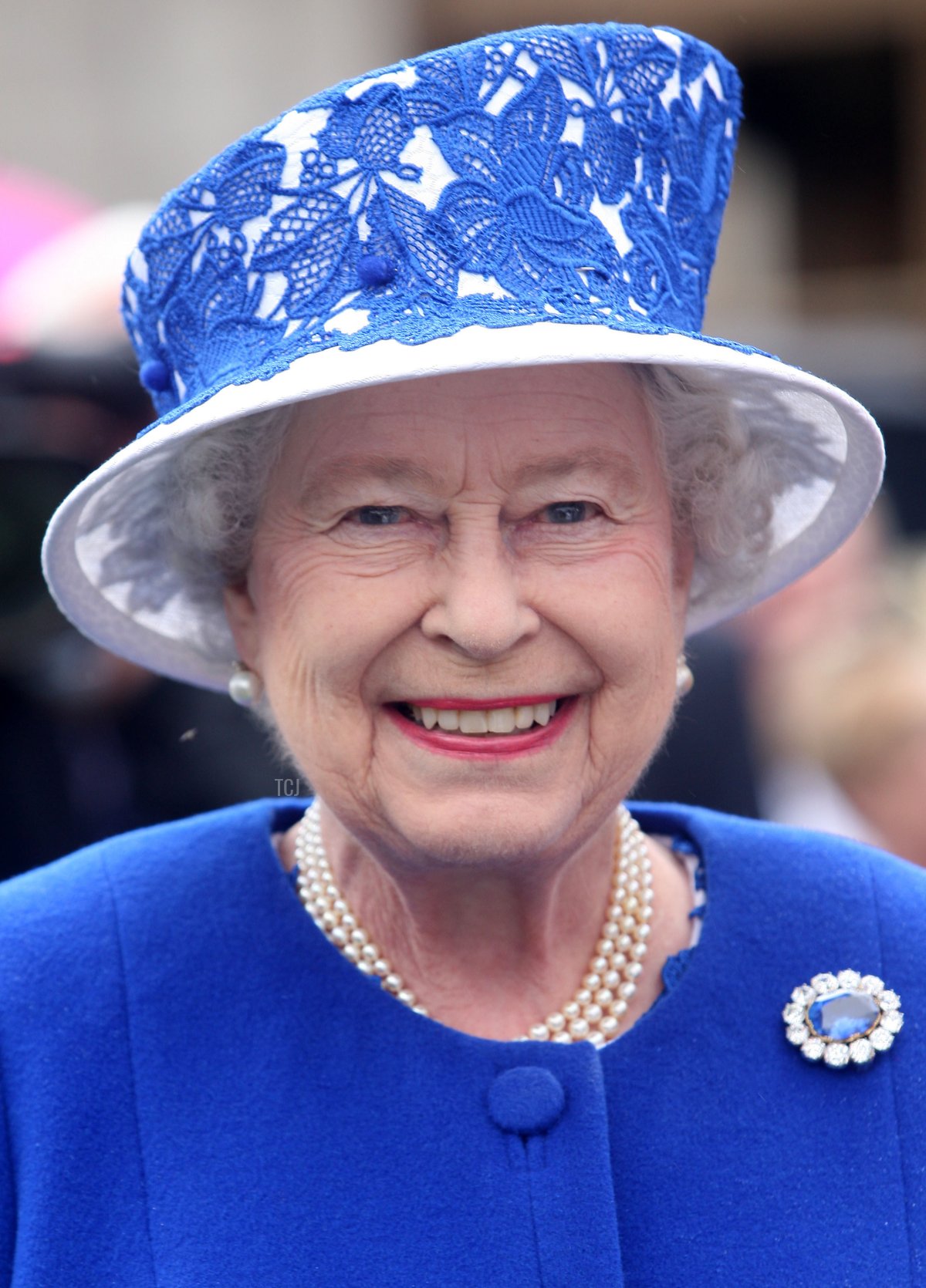
The brooch was a favorite of the late Queen Elizabeth II, who wore it very frequently throughout her 70 years on the throne. It has not been seen in public since her death in September 2022.
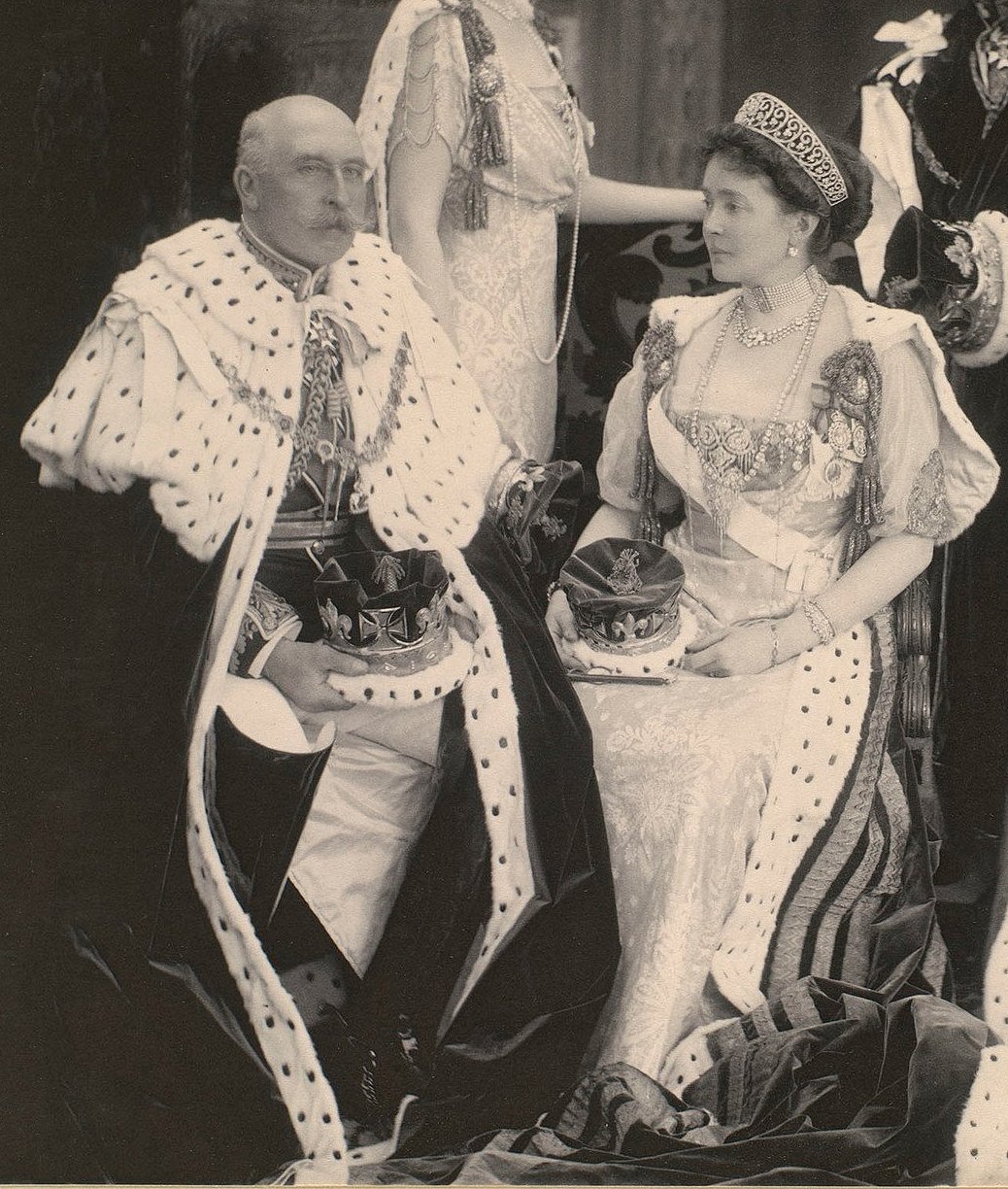
And what about the Turkish Diamonds? During her lifetime, Queen Victoria gave the necklace from the suite to her seventh child, the Duke of Connaught and Strathearn. His wife, Louise, wore the necklace at numerous important occasions, including the coronations of Emperor Nicholas II of Russia in 1896 and King George V of the United Kingdom in 1911. You’ll spot the jewel on her in this photograph from the 1911 coronation, paired with a pearl choker and a diamond sautoir. Decades later, their descendants sold the necklace at auction. It was sold in London in 1970.
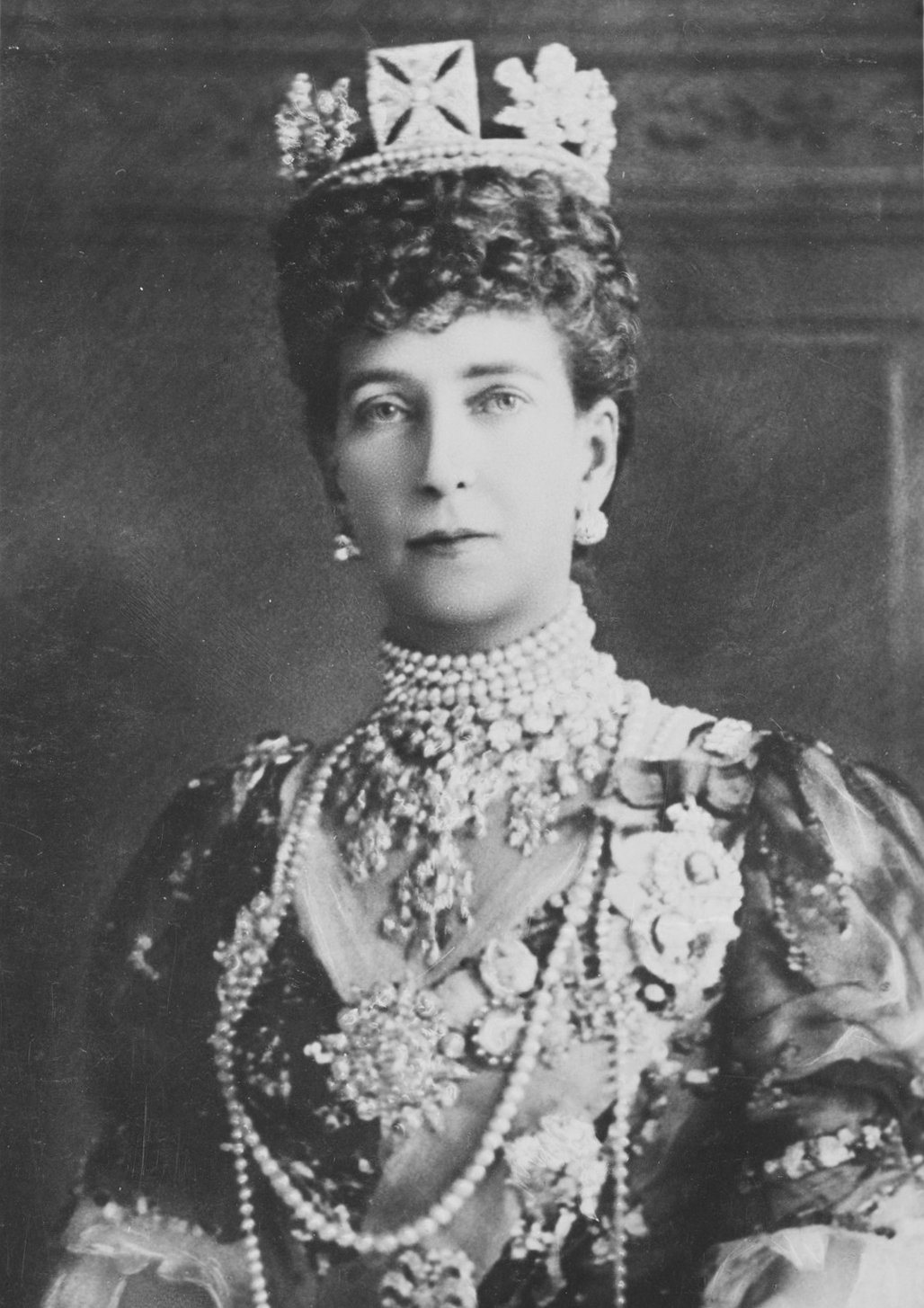
The fate of the earrings from the Turkish suite is a mystery. Some argue that they were given to Victoria’s daughter-in-law, Queen Alexandra, who wore a pair of elaborate diamond pendants frequently on her necklaces. You can see the pendants in this 1905 photograph, on either side of the larger central pendant on her necklace.
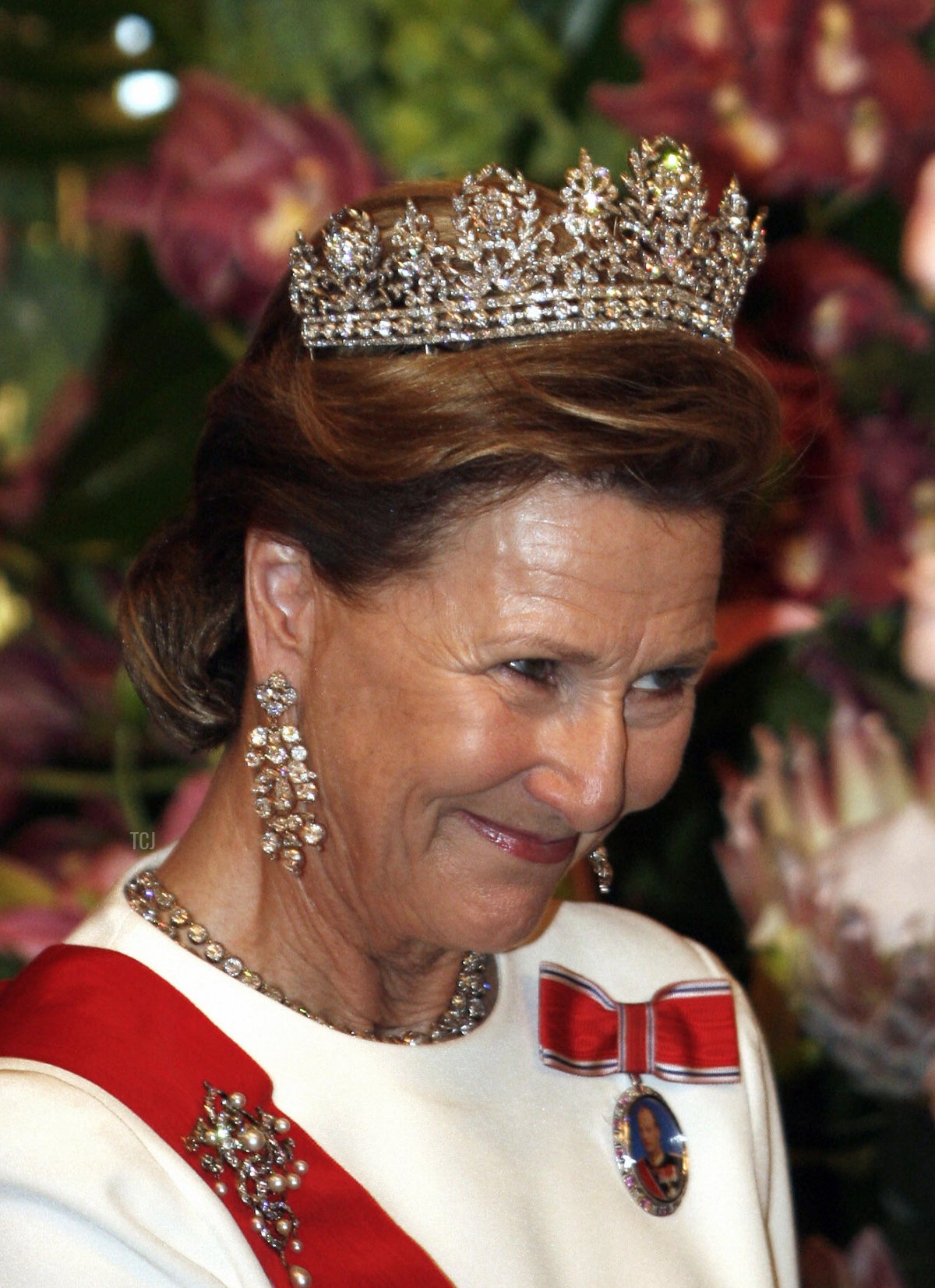
Alexandra’s diamond pendants now belong to the Norwegian royal family (inherited via Queen Maud) and are worn as earrings by Queen Sonja. But to my eye, Sonja’s earrings aren’t the same size or shape as Queen Victoria’s Turkish earrings. What do you think?
Leave a Reply
You must be logged in to post a comment.